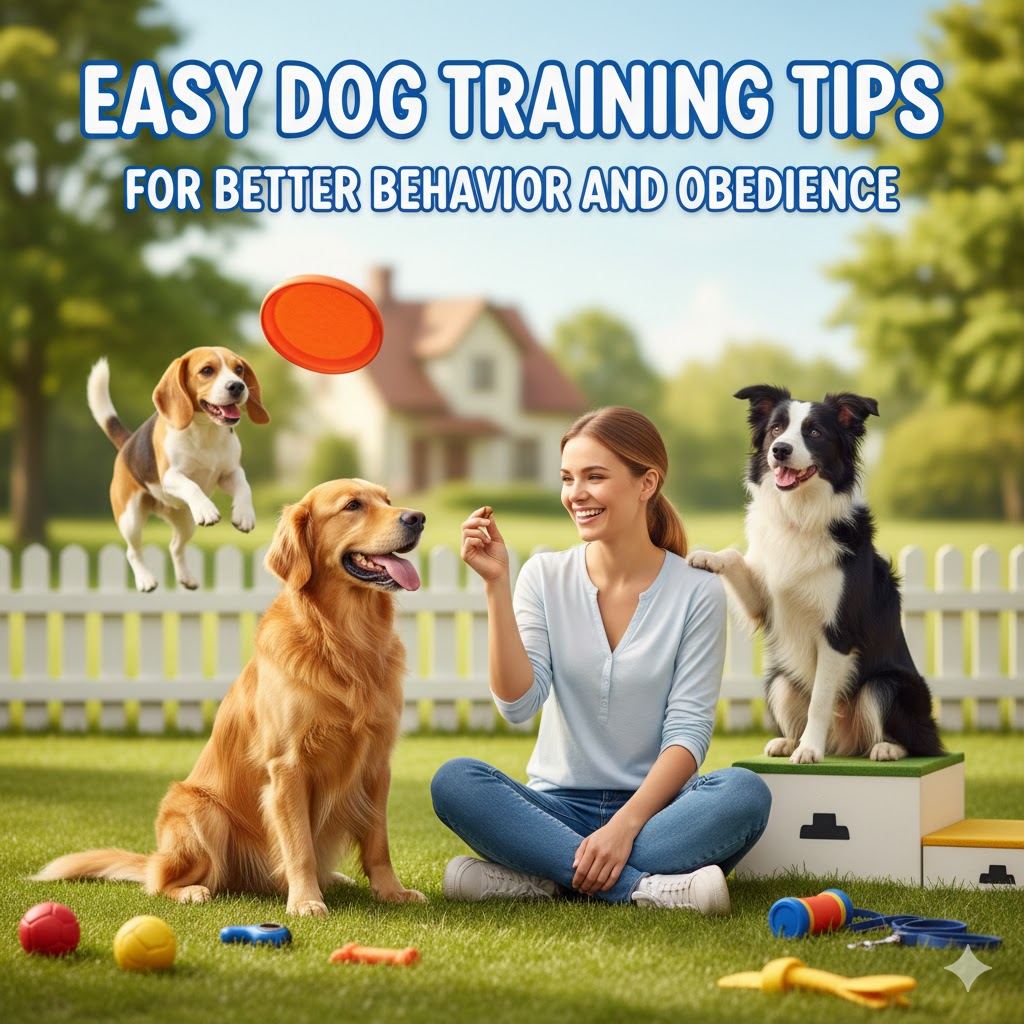
Training your dog doesn’t have to be complicated or stressful. With patience, consistency, and the right approach, you can teach your pup to follow commands, behave well, and build a strong bond based on trust and respect. Whether you’re a first-time pet parent or an experienced dog owner, these easy dog training tips will help improve your dog’s behavior and obedience effectively.
Start Training Early
The earlier you begin training your dog, the easier it becomes. Puppies are quick learners and can start picking up simple commands like sit, stay, and come as early as eight weeks old. Early training helps prevent unwanted habits such as jumping, biting, or excessive barking.
Use Positive Reinforcement
Dogs respond best to kindness and encouragement. Reward your pup with treats, praise, or playtime whenever they follow a command or behave well. Positive reinforcement strengthens good behavior and helps your dog associate training with happy experiences.
Keep Training Sessions Short and Fun
Dogs have short attention spans, especially puppies. Keep your training sessions around 10–15 minutes and end on a positive note. Use a cheerful tone, play between lessons, and make learning enjoyable. This keeps your dog motivated and prevents frustration for both of you.
Be Consistent with Commands
Consistency is the key to successful training. Use the same words and gestures for each command so your dog understands exactly what you expect. For example, don’t switch between “come here” and “come” — pick one and stick with it. Everyone in your household should use the same commands to avoid confusion.
Practice Patience and Repetition
Dogs learn through repetition, so don’t expect instant results. Practice commands regularly in short sessions and stay patient. Celebrate small progress—every step counts! With time, your dog will start responding naturally to your cues.
Socialize Your Dog Early
Socialization plays a big role in shaping a dog’s behavior. Expose your puppy to different people, pets, sounds, and environments to help them feel confident and calm. Well-socialized dogs are less likely to show aggression, fear, or anxiety in new situations.
Avoid Punishment-Based Training
Yelling or punishing your dog can lead to fear and stress, making training harder. Instead, redirect bad behavior with a firm “no” and encourage positive actions. Dogs learn better when they feel safe and supported, not scared.
Use Training Tools Wisely
Tools like clickers, harnesses, or treat pouches can make training smoother. Clicker training, for example, marks the exact moment your dog performs a correct action, helping them learn faster. Always choose gentle, pet-friendly tools that promote comfort and safety.
Practice in Different Environments
Once your dog learns commands indoors, practice them outside or in busier places. This teaches your pup to follow instructions even with distractions around. Gradual exposure helps build focus and obedience in real-life situations.
Conclusion
Training your dog is not just about teaching commands—it’s about building a lasting connection. With these easy dog training tips, you’ll nurture obedience, confidence, and a stronger bond with your furry friend. Remember: consistency, patience, and love are the true secrets behind every well-trained dog 🐾❤️.
So grab some treats, stay positive, and enjoy every step of your dog’s training journey! PetsDogPuppy
